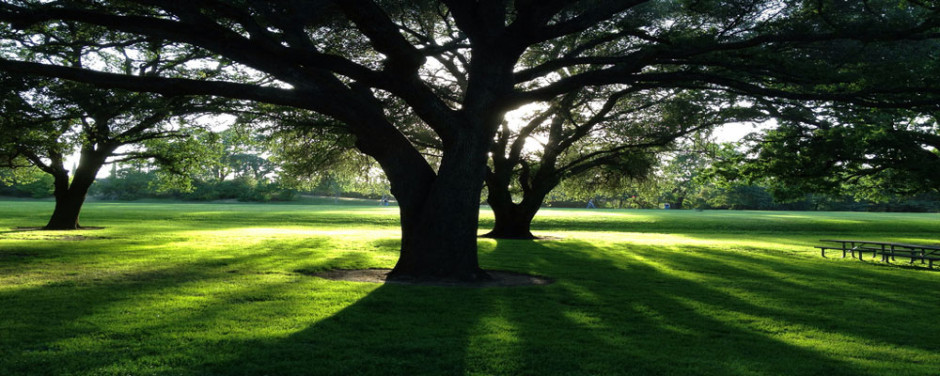Identifying 8 Common Tree Diseases in Southwestern Ontario
As we all know, caring for trees on your property is a rewarding experience with widespread environmental benefits – but it can potentially come with some concerns as well. Like other plants and animals, all trees are susceptible to a variety of diseases that depend on where they are located and how well they are cared for.
Fungi and insects are the most common instigators of tree diseases in Canada, but several environmental factors, including drought, soil quality, air pollution and construction, can also play a role in determining how healthy a tree is. Trees that are planted in urban areas like London Ontario and Kitchener Ontario and not properly maintained are more likely to weaken and become affected by these issues.
As a tree owner, it is important for you to confirm what kind of trees you have on and around your property, as well as identifying the tree diseases prevalent in your area.
Below are eight common tree diseases in Southwestern Ontario that could be affecting your greenery.
1. Emerald Ash Borer
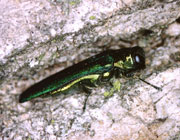
The Emerald Ash Borer is a beetle from Asia that attacks and kills ash trees by feeding off their inner bark and disrupting the flow of their water and nutrients. Emerald Ash Borer is nearly impossible to identify without cutting the tree down or skinning off a large portion of the bark.
However, after approximately two years of infestation, signs such as cracking bark, small holes and loss of tree density will begin to show. Most affected trees will die in approximately two to three years of becoming infected with this common tree disease.
Trees affected: All species of ash trees
2. Dutch Elm Disease

Caused by the fungus ophiostoma ulmi, Dutch Elm Disease attacks and blocks the water-conducting systems within elm trees. Elm bark beetles also act as carriers of the fungus, transferring the disease from infected trees to healthy ones.
You can identify Dutch Elm Disease by leaves that are curling and shriveling on one or more of your tree’s branches, which will eventually turn yellow and wilt. Once all of the wilting has taken place, the entire tree will die.
Trees affected: All species of elm trees, excluding Siberian, Chinese and Japanese
3. Asian Long-horned Beetle
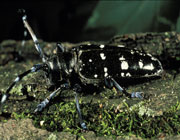
The Asian Long-horned Beetle’s larvae tunnel through multiple kinds of trees in Southwestern Ontario, leading to fungal growth, weakness to the tree, and, ultimately, death.
This specific tree disease is challenging to deal with because most of the time infected trees die within a short period of time. As a result, the potential for a devastating impact on Canadian forests is a real fear. Holes in trees that are 20mm in diameter or larger are a basic sign the tree has been infested.
Trees affected: Birch, elm, hackberry, maple, mountain ash, poplar, aspen and willow trees
4. Beech Bark Disease
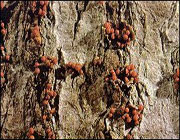
Beech Bark Disease has only recently been discovered in Southwestern Ontario, but it poses a major threat to all beech trees in the area. Caused by a beech bark scale and a species of Nectria fungi, serious damage only occurs after the fungi has invaded and killed bark that is already stressed by scale infestation.
Affected trees will have discoloured and missing scales, brown slime oozing from the dead bark, and leaves that do not reach their full size or colour.
Trees affected: All species of beech trees
5. European Gypsy Moth
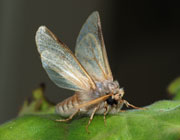
The European Gypsy Moth has been affecting trees in Southwestern Ontario for over 20 years. The larva stage of the moth eats the leaves of multiple kinds of trees, making them a target for other disease and damage, and, eventually, death. However, identifying this tree disease is much easier than other diseases as the affected trees lose their leaves and caterpillars crawl everywhere around them.
Trees affected: Oak, birch, poplar, willow, beech, cherry, maple, apple, basswood and elm
6. Tar Spot
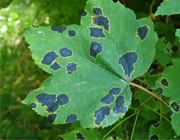
Tar spot will not cause long-term damage, but can make your tree look ragged and unattractive. Caused by the fungus Rhytisma acerinum, tar spot becomes noticeable on affected trees in the late summer and early fall, resulting in raised black spots. The most effective way to tackle this issue is to rake and destroy the affected leaves, to reduce the spread of the disease in the following spring.
Trees affected: Many species of maple trees, including red maple, Norway maple and silver maple, as well as willow and tulip trees
7. Magnolia Scale
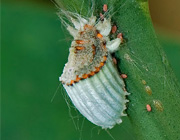
Magnolia scale are large insects that can kill entire branches by feeding on a tree’s sap through its vascular system. Affected trees often have branches that are covered with mould that grows on the magnolia scale’s waste, otherwise known as honeydew. This sticky honeydew — as well as stunted growth and branch decline — is the easiest ways to identify whether or not these insects have infested your tree.
Trees affected: Star magnolia, saucer magnolia and cucumber tree magnolia, as well as Virginia creeper and tulip trees
8. Tent Caterpillars/Fall Webworm
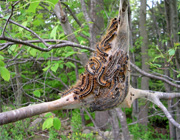
Found throughout Canada, the larvae of several moth and butterfly species are referred to as tent caterpillars. They are found in large groups, and multiply at a rapid pace – enabling them to defoliate trees in a short amount of time. The easiest way to identify these insects is through the webs or “tents” they create, which are used for protection.
One species of tent caterpillar is the fall webworm. They feed on close to 90 species of trees, and create their “tents” at the ends of branches. While these insects rarely kill trees, they can reduce the decorative value of your tree with their unsightly webs and ability to defoliate branches.
Trees affected: Trees affected: Cherry, apple and crabapple, aspen, maple, oak, hawthorn and many more
It is important to take care of the trees on your property, as they are a crucial part of improving the greater local ecosystem by providing shelter and food for wildlife in the area. To prevent these diseases from affecting your trees, you should do plenty of research on the best trees to plant in your area.
If you think one of your trees may be affected by one of the common tree diseases listed above, it is crucial that you take action to cure the tree of the disease, or have it removed if the tree is too far gone. Olympic Tree Care can always be called for expert tree diagnostics, treatment, and removal across Southwestern Ontario. Call or email us for expert tree care services.

